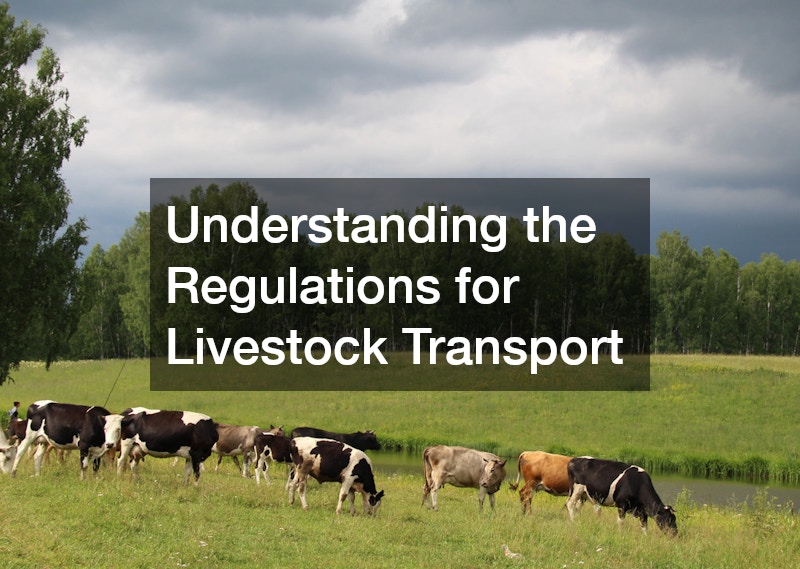Gooseneck livestock trailers play an indispensable role in the agricultural industry, providing a robust and reliable method for transporting animals. This article delves into the vital aspects of these trailers, from their design advantages to the regulatory considerations involved in their use.
What are Gooseneck Livestock Trailers?
Definition and Basic Features
Gooseneck livestock trailers are specialized trailers designed to be attached to a pickup truck using a hitch that goes over the truck’s rear axle. This design offers enhanced control and weight distribution, making them ideal for carrying heavy and shifting loads like livestock.
These trailers often feature slatted sides for ventilation and are constructed with durable materials to withstand the rigors of transporting animals. They come in various sizes and configurations, allowing them to be customized according to specific transport needs.
Gooseneck trailers are preferred by many farmers and ranchers for their superior towing experience. Their design significantly reduces the swaying and instability that can occur with other types of trailer hitches.
Comparison with Bumper Pull Trailers
In comparison to bumper pull trailers, gooseneck trailers offer a tighter turning radius, which is crucial for maneuvering in confined spaces. The positioning of the hitch above the rear axle also reduces tail swing, minimizing the risk of accidents during transport.
Bumper pull trailers, while generally easier to attach and detach, don’t offer the same stability as gooseneck trailers, especially at higher speeds or on uneven surfaces. This makes gooseneck trailers a safer choice for long-distance travel or when transporting valuable livestock.
The gooseneck design also allows for larger trailers, providing greater capacity for transporting more animals in a single trip. This can lead to increased efficiency and cost savings over time, reinforcing their value in the agricultural sector.
Benefits of Using Gooseneck Trailers for Livestock Transport
Safety and Stability Factors
Gooseneck trailers provide superior stability compared to bumper pull trailers, reducing the risk of accidents on the road. This stability is particularly important when transporting animals, who can move and shift inside the trailer, affecting balance.
The enhanced safety features of gooseneck trailers, such as their robust frame and hitch design, ensure that livestock remains secure during transport. Farmers and ranchers can rely on these trailers to handle the unpredictable nature of roads and weather.
The reduced swaying of gooseneck trailers contributes significantly to the safety of both the animals being transported and other road users. This reliability is a critical factor for those in the livestock industry.
Increased Capacity and Efficiency
One of the major benefits of gooseneck trailers is their increased capacity, allowing for larger loads to be transported. This translates to fewer trips when moving livestock, enhancing efficiency and reducing fuel costs.
The efficient design of these trailers ensures that loading and unloading can be done quickly, minimizing stress on the animals. This efficiency is a key advantage in ensuring the welfare of livestock during transport.
By maximizing the amount of livestock that can be moved at once, gooseneck trailers contribute to the productivity of agricultural operations. Their design optimizes the balance between capacity and vehicle handling.
How to Choose the Right Gooseneck Livestock Trailer
Key Features to Consider
When selecting a gooseneck livestock trailer, it’s important to consider features such as the hitch design, ventilation, and interior layout. A smooth towing experience often hinges on these critical aspects.
Safety features like brakes, lights, and partitions can greatly enhance the safety and practical utility of the trailer. Investing in a trailer with high-quality components pays off through reduced maintenance and improved safety.
The loading mechanism is another crucial feature, as it directly impacts the ease of use and the comfort of the livestock. Choosing a trailer with a ramp or step entry can make a significant difference in usability.
Assessing Trailer Size and Material
The size of the trailer should match the transport needs, balancing capacity with the ability to navigate routes efficiently. Larger trailers may require more powerful towing vehicles and additional permits.
Materials used in the trailer’s construction, such as aluminum or galvanized steel, influence durability and maintenance requirements. Aluminum trailers are favored for their light weight and resistance to rust.
Choosing the right material can affect not only the longevity of the trailer but also its resale value. Durable trailers reduce the need for frequent replacements, offering long-term cost-effectiveness.
Maintenance Tips for Gooseneck Livestock Trailers
Regular Inspection and Repair
Performing regular inspections is vital to ensure the operational safety of gooseneck trailers. Checking components such as brakes, tires, and the hitch can prevent potential failures and enhance safety.
Promptly addressing repairs and replacements keeps the trailer in optimal condition, allowing for safe and reliable transport. Regular maintenance checks are crucial to identifying wear and complacency before they become critical issues.
Cleaning and Corrosion Prevention
Keeping the trailer clean is essential to preventing rust and prolonging its lifespan. Regular washing removes dirt and debris that can lead to corrosion.
In addition to cleaning, applying protective coatings can further shield the trailer from the elements. Proactive measures such as these can greatly enhance the durability of the trailer.
Understanding the Regulations for Livestock Transport
Compliance with Transport Laws
Complying with livestock transport laws is essential for the safety and legality of operations. Understanding these laws can prevent potential fines and legal issues.
Each region may have specific regulations regarding the transportation of animals, including restrictions on trailer size and type. Staying informed about these is crucial to ensure compliance.
Documentation and Permitting Requirements
Proper documentation is critical when transporting livestock, including required permits and health records. Ensuring these documents are up-to-date facilitates smooth transit and inspections.
Acquiring the necessary permits can be a complex process, often requiring detailed information about the cargo and transit routes. Preparing these in advance can prevent delays and complications.



